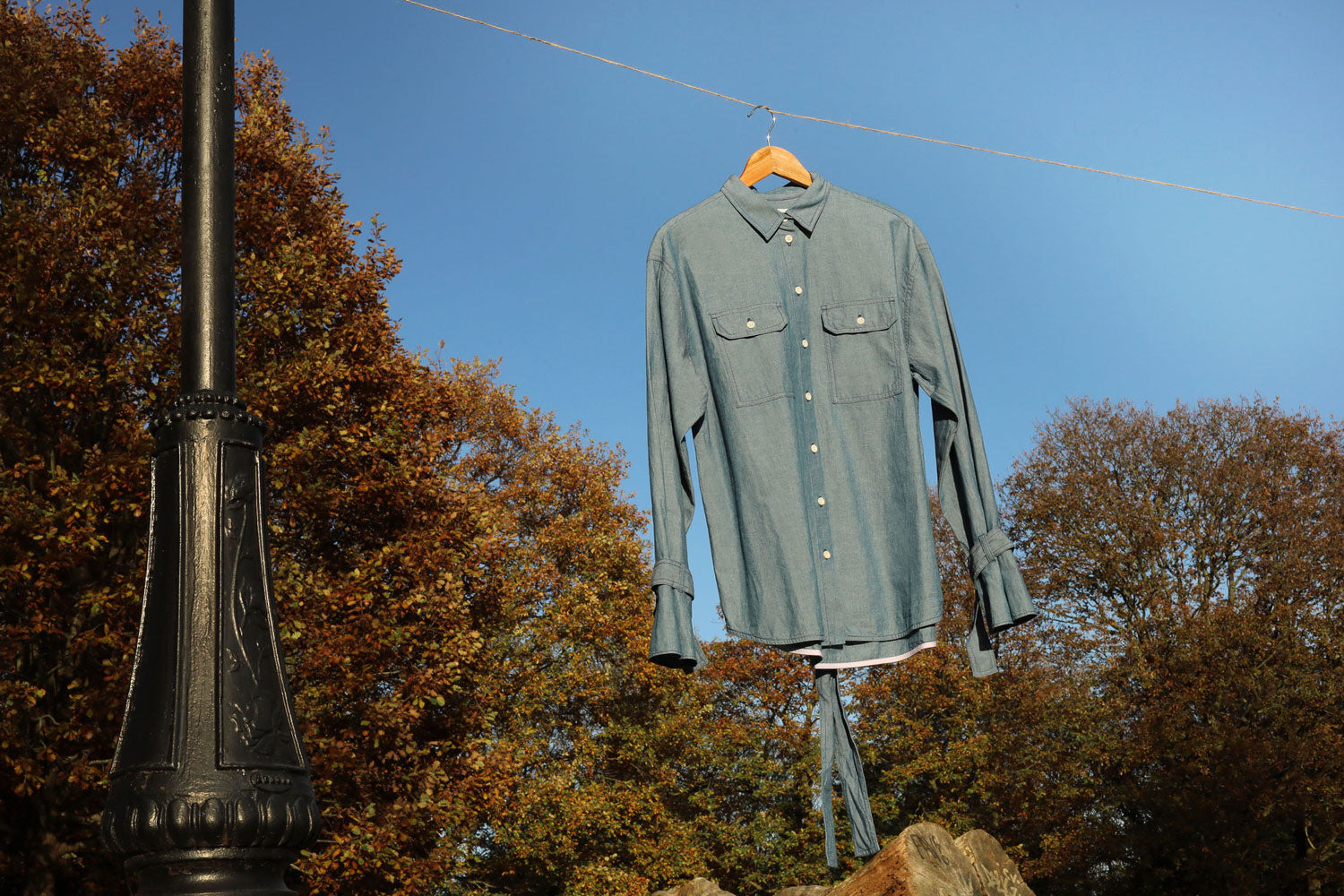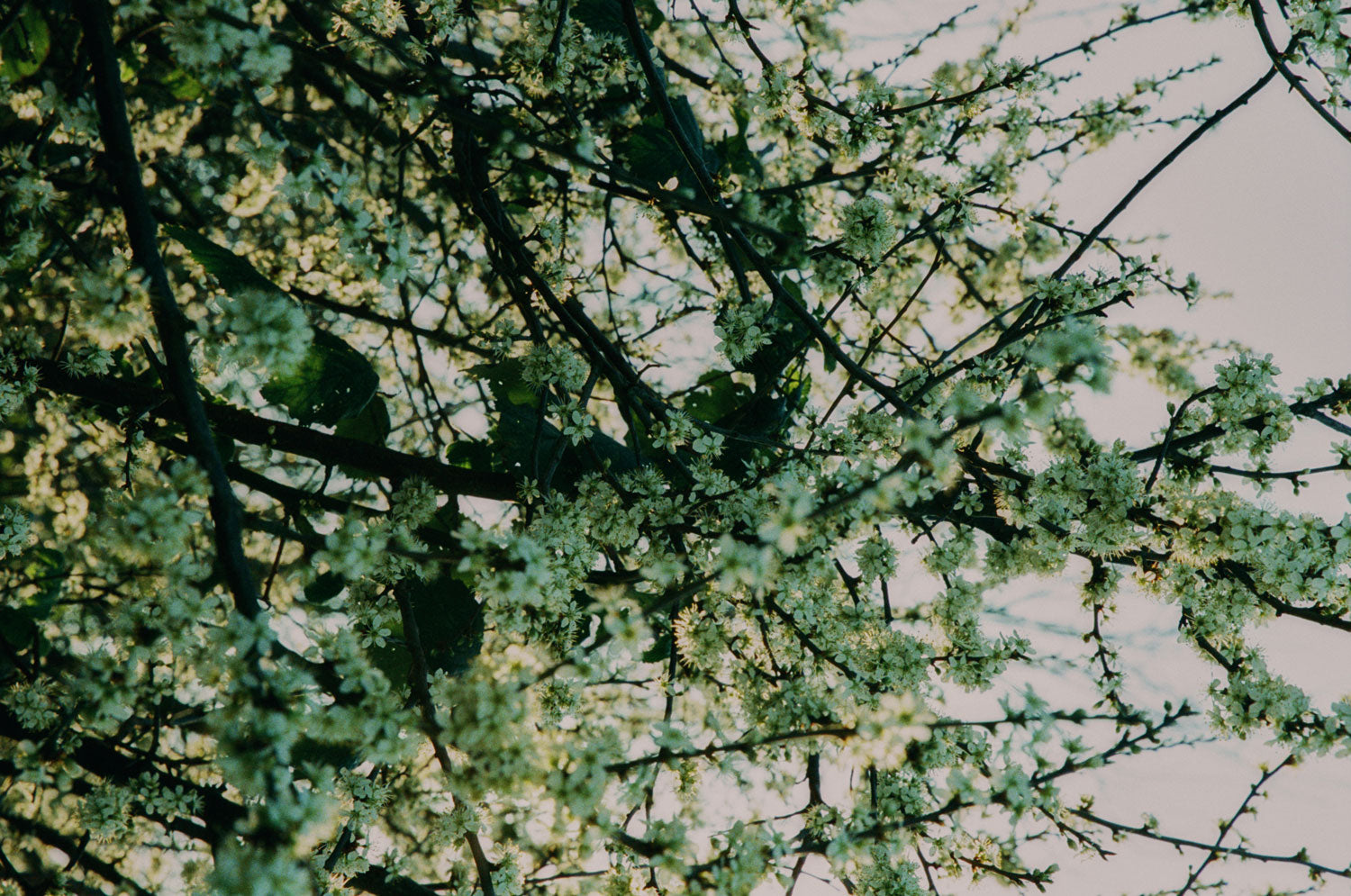Denim is a definitive staple in any wardrobe; be it jeans, denim shirts, fashion styles worked up in denim. It comes with an ease, and casualness. But denim has a complex history which should be understood. And so, before we discuss Japanese denim, let us understand denim in it’s own right.
A Brief History of Denim
It is thought that denim, the fabric, first originated in Nimes, in France. The name ‘denim’ is said to come from ‘de Nimes’, meaning from Nimes. This is where it was believed that tailors first made the weave of denim; the weft yarn sitting behind two warp yarns, creating a diagonal weave visual, and a hardy, reinforced cloth. The weft yarn, sitting on the inside was left white, whilst the warp yarns, sitting on the outside were dyed indigo. This is what creates that whiter appearance on the inside of a denim garment.
The Modern Day Jean
In 1851 Levi Strauss - formerly Loeb Strauss- left Germany to escape antisemitism in the country, and moved to New York, where his brother had a store selling cloth. After hearing of the California Gold Rush, Levi left New York to head West, to San Francisco, to set up his own branch of the store. One of the popular cloths Levi imported to sell in his store was a heavy cotton, denim.
Jacob W. Davis was one of Levi’s customers’, a tailor originally from Nevada. He produced horse blankets and wagon covers from the denim purchased from Levi’s store, and soon started to make trousers from the denim for a gold mining company. It was Davis that had the idea of using metal rivets to help hold the cloth together, having found the garments became worn through quickly, the seams tearing from the laboured work in the mines.
In 1873, the pair became partners, and patented the use of the metal rivet for the denim; they begun manufacturing denim overalls, and the first jean by the partnership was created in the 1890s.
Whilst the modern format of jeans can be somewhat attributed to Levis Strauss and Jacob Davis, denim as a form of workwear has been worn throughout history within many cultures long before their partnership began. Farm and plantation workers have worn denim as their traditional workwear long before Levis created the traditional jean we know today, mending and upcycling their own denim to prolong its life.
Indigo Roots
Natural blue dye is very rare, and there are only a handful of plants that can provide blue dyes. Indigo is from the plant group Indigofera. Of this genus, Indigofera Suffruticosa and Indigofera Tinctoria are the variations used for creating indigo dyes. Indigo has been used in dying cloth for millenia. It is thought to have been used even before Eygptian cloth, over 5000 years ago; scraps of indigo dyed cloth were discovered in Huaca Prieta in Peru, a prehistoric settlement excavated in the 1940s.
Because of the rarity of blue dye in nature, indigofera was a highly valuable crop. It has been highly colonised, and has a deep dark history.
Indigo was highly sought after in Europe, and the desire for this commodity spread throughout; it became a high value commodity that was traded across the globe and was in high demand. But with its high demand and high value, indigo brought strain on the producers. Much of the European indigo was produced in India, but such high demand meant local workers were pushed into the turmoil of torture to harvest and provide more crop to meet the high demands by their planters; their planters were often those that had travelled to India to profit off of the indigo crop and export the supplies all of the world.
Between 1859-1860 there was the Indian Indigo Revolt, an uprising by the Indian farmers against their planters in protest of the unfavourable working conditions. Supply of indigo from India plummeted after this, and Europe turned to Southern America for their supply of indigo. Working conditions and practises were no better there. Supply and demand only served to create trade hungry plantation owners. Villagers and indigenous communities were pressured to work in the plantations to grow and harvest more indigo to meet demand.
[You can read more about the Indian Indigo Revolt here: http://www.indiancommunities.org/2019/08/01/indigo-revolt-1859-60/]
The green leaves of Indigofera Tinctoria, from which Indigo dye comes from
The history of many of our staple crops today, especially those in the fashion industry are steeped in our colonial past, where working conditions, and the treatment and pay of the workers falls far short of anything that we would consider good working practises. It is important to understand the journey that history has shown us, in order to demand better today of the way that the crops we use are grown, and the people that work within the fashion industry (and all industries!) are treated. Too much mistreatment and wage poverty is still going on today; it is not sustainable to human life or the planet to produce clothing in such a way.
What is it that makes Japanese denim so special?
Whilst Indigo has been around in Japan for millenia, denim in its considered premium form from Japan is much newer. Indigo nowadays can be formed as a dye in a much cheaper, and synthetic form. Premium denim, such as that of our denim which comes from Japan, is dyed with the natural dye indigo. Premium Japanese denim is often produced on old shuttle looms, which require an artisanal technique to weave the denim mainly by hand. After the Second World War, denim manufacture in the US developed to use newer industrial machinery. But the Japanese weavers snapped up these original shuttle looms, that the US mills no longer wanted, to produce their own denim on. Often these looms created much narrower widths of denim fabric rolls, meaning that whilst the same ‘volume’ of cloth may be used on a garment as a wider cloth, more meterage is used to create the garments, which can mean a premium price per garment. These narrower looms are also how the sought after Japanese selvedge denim is created, like the Saywood rich indigo denim of the Etta Shirtdress.

Denim fabric is always delivered from the fabric mills unwashed. It is the garment manufacturer who then makes the garment, and then sends them for washing as part of the finishing process. As the garment is always made up when washed, this is what gives each denim piece a unique quality; wash levels can slightly vary, and there is usually variation in colour levels at any seams, especially where there is top stitching. This is the beauty of denim; the finishing plays a unique role in the garments aesthetic.

At Saywood, our denim is bought from an Italian fabric mill, who work with premium Japanese denim mills to weave their denim range. The denim is from the Okayama district in Japan, which is known as the ‘birthplace of Japanese denim’. This particular denim is produced in the city of Ibara, where a small craft enterprise produces this premium and highly esteemed denim. Through the use of ancestral handcraft work, highly skilled weavers create this denim exclusively for this mill.
The rich indigo denim used for the Saywood Etta Oversized Shirtdress, Lela Patch Pocket Shirt and the Amelia Wide Leg Trousers are from the most premium denim line these weavers make, made especially for indigo denim lovers; the colour is so beautifully intense. Developed by craft experts, the roll of fabric has the red selvedge akin to premium Japanese denim, with a soft handfeel and imperfect yarns, which add to the beauty and unique make-up of the cloth. Whilst the light wash denim of our Zadie Boyfriend Shirt and Rosa Puff Sleeve Dress is crafted with an indigo warp, with the worn canvas look in mind. This cloth was designed to age; the more it is worn, the more beautiful it becomes, wash after wash, creating more and more memories in its own right.
It is important to acknowledge and understand the history of the industry, as this helps us to understand the process of making clothes, and teaches us to treasure these pieces that we love. Clothing was originally never made as a throwaway commodity, but today the fast fashion industry thrives off of this ‘throwaway and buy more’ culture. Learning more about where our clothes came from gives us a deep respect for our most loved items in our wardrobe; let us care for them always.
DISCOVER OUR JAPANESE DENIM COLLECTION
Further reading - Some really interesting articles I read whilst I was writing this blog that I'd like to share with you:
The Public: Denim Jeans: A Story of Colonialism, Cash Crops, and Cotton, Mar 20, By Andrew Yang
https://www.epthepublic.net/content/denim-jeans-a-story-of-colonialism-cash-crops-and-cotton
What Makes Japanese Denim So Special? Updated: May 9, 2018 | Published: Jun 18, 2013
https://www.heddels.com/2013/06/what-makes-japanese-denim-so-special/







